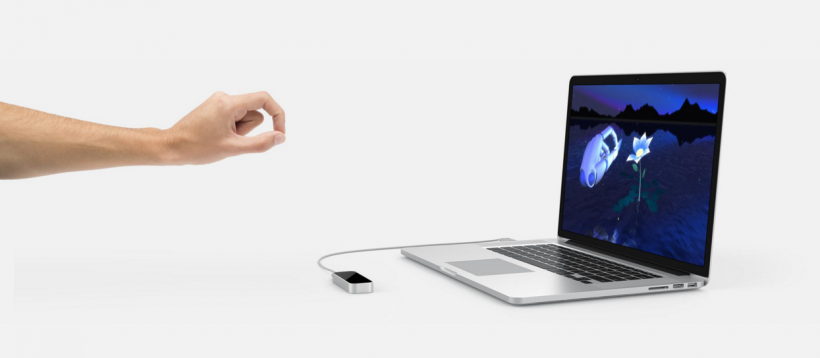Submitted by Frank Macey on
Apple took multitouch gestures to a new level with the launch of the original iPhone. The iPhone 6s brought the concept even further, adding 3D Touch to detect pressure. Now it seems that future iOS devices may include the space above the screen as another level of input. In a patent granted this week the company details methods for hover detection, which could be used to sense gestures made without contacting the display surface at all.
The Leap Motion Controller pictured above is one example of similar technology in action. When it comes to the iPhone, the additional sensing capability would be made possible using an array of proximity sensors embedded between the capacitive touch sensors already found in the surface of the device. The addition of proximity sensors would effectively deliver the position of the user's fingers in space above the screen to iOS.
As such, a variety of new gestures would be possible in three dimensions above, on and by pressing on the display. The iPhone already utilizes proximity sensors to determine when the device is up against the user's ear. This turns the touch-sensitive display off when making a phone call, for example.
Another facet of the recent Apple patent would even add more capability to standard multitouch gestures. Currently, touching the iPhone display in two places at once doesn't do much. In some cases it confuses things, other times two fingers can result in nothing happening at all. Enhancements to multitouch could change all of this, making it possible for the iPhone to recognize and respond to two touches at once. This development could add yet another way to control iOS and interact with apps.
The official title for US Patent number 9,250,734 is "Proximity and multi-touch sensor detection and demodulation".